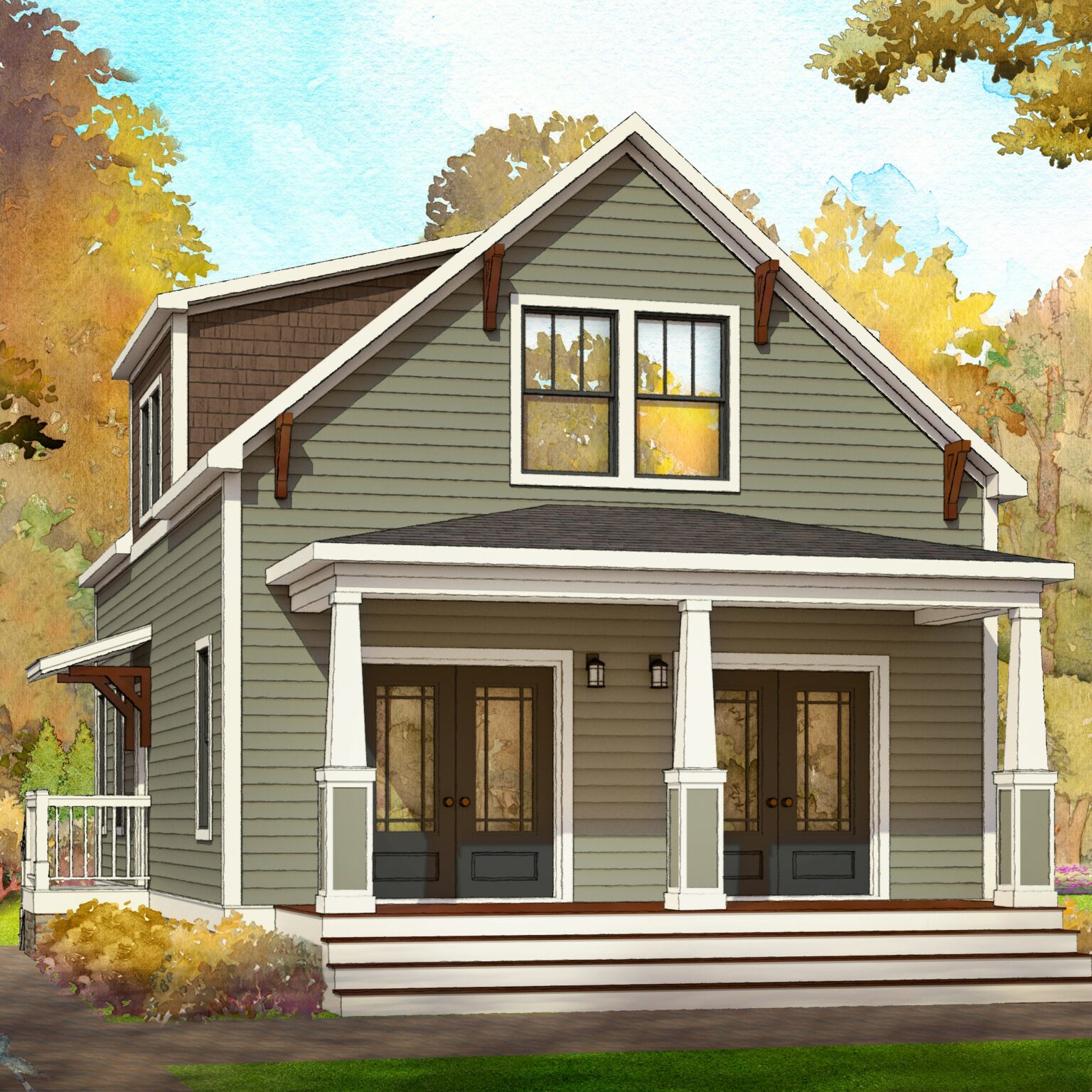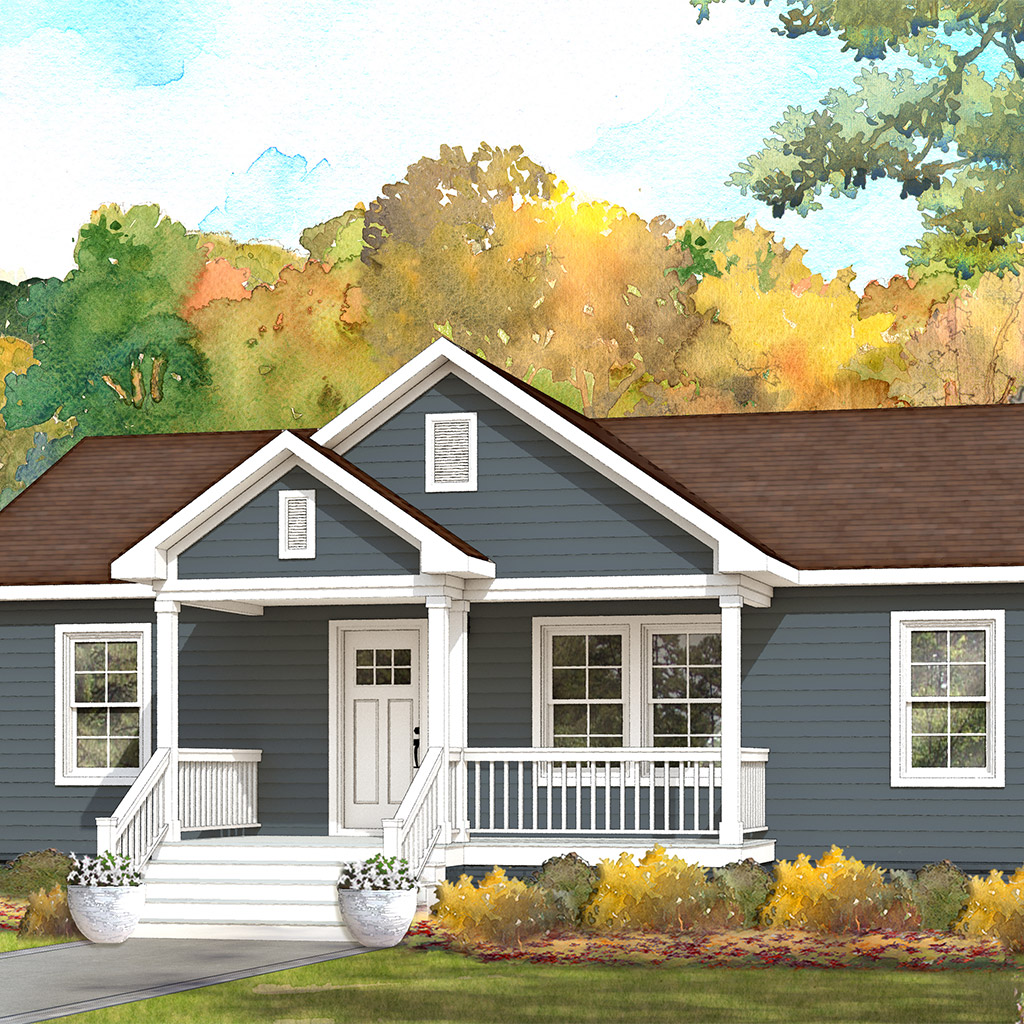Hi there! You’re probably wondering: “What exactly is a modular home?” Well, we’re here to help! Below you’ll find everything you need to know about modular homes.

What Is a Modular Home?
What is a modular home?
Let us clear up some of the confusion for you!
Modular homes are structures built in a controlled and environmentally protected facility. They are built using precise and efficient construction technology. Modular homes are built to the same local and state building codes as a site-built home, but because they are transported to the home site from the factory, modular homes tend to be much stronger than site-built homes.
What’s the difference between Modular, Manufactured, Trailers, and Mobile Homes?
The terms mobile home, manufactured home, trailer, modular home, prefabricated, and systems built are often considered synonymous. Yes, all are built off-site in a factory setting, but the similarities stop there. There is a huge difference in the building code and manufacturing processes of each of these types of homes.
Mobile Homes (Sometimes called trailers, or manufactured homes)
Mobile homes are houses that are built on a frame and are designed to be transported to the customer’s home site, hence the name mobile home. They were originally moved from place to place and were often considered temporary living arrangements. Mobile homes have been around for a long time.
Mobile Homes are now overseen by the United States Department of Housing and Urban Development (HUD), established in 1976. Before HUD became involved, mobile homes were not held to any specific code or manufacturing standard.
HUD provides a nationwide minimum standard specification for mobile homes. One of the requirements that remains to this day is that the frame is an integral part of the structure. The frame is engineered to carry the structural load of the roof and walls. Because of this, the frame must remain under a mobile home and cannot be removed. This nationwide code prohibits state and local authorities from having any jurisdiction over how the home is built. This is not necessarily a bad thing though. However, along with the state and local folks losing authority, so did the homeowner or buyer. There is zero flexibility in the design of a mobile home. Other than cosmetics, you are not able to make changes to your design.
Modular Homes
Modular homes are the next generation of manufactured homes. Placing the structural engineering under a state and local code provides a means for the states to control and certify that the home meets their criteria. It allows the buyer to have more say over the design parameters. It also allows for the removal of the frame by having the structure engineered to transfer the load calculations to the engineered foundation instead of the transportation frame used in mobile homes. The frame no longer has to be an integral part of the construction.
Modular Homes are built to the same building codes as a site-built home, and the only moving a modular home will do is going down the line in the manufacturing plant and heading to the site. Modular homes are permanently affixed to their foundation, and they are indistinguishable from their site-built counterparts.
Other notable differences between modular homes and mobile homes:
Modular homes…
- Appraise the same as their on-site built counterparts do; they do not depreciate.
- Can have some customization.
- Most modular home companies have in-house engineering departments that utilize CAD (Computer Aided Design).
- Designs vary in style and size.
- Modular construction can be used for commercial applications, including office buildings.
- Are permanent structures — “real property.”
- Can be built on crawl spaces, basements or pilings.
- Considered a form of green building.
- Are faster to build than 100 percent site-built homes.
- Home loans for modular homes are the same as site-built homes.
- Insurance premiums for modular homes are the same as site-built homes.
- Taxes on modular homes are the same as site-built homes.
- Can be built to withstand 180-mph winds.
- Can be built for accessible living and designed for future conveniences.
– Jessica Ryan for Freshome.com
Modular homes built on a frame… WHAT?!
In manufactured housing, there are really only two types of houses, according to the building codes. Houses built to HUD building codes (trailers, manufactured homes, mobile homes) and houses built to state and local residential building codes (modular, systems built, or stick-built houses).
Another term you may come across when researching modular homes is “Hudular.” What on earth is a Hudular? Mostly, it is an industry term or nickname that is appearing more and more. Essentially it is a modular home, built by a mobile home manufacturer, that may or may not come off the frame once it is complete. Some consumers prefer the flexibility offered by a modular home manufacturer and yet they are placing their home in a rented land community and do not mind having a frame under their home.
Mobile home manufacturers are continually improving the quality and detail in their product lines. So, when you walk into a mobile home, it can be difficult to see the difference as they look very much like a modular home. But remember, there are differences.
Since best practices in the mobile home industry are based around finding incremental cost savings, you have to ask yourself, “where are they cutting costs?” They build the mobile home and Hudular on the same production line. Why does it matter? It doesn’t as long as you know the difference, but you might have to dig deeper to figure out how they are accomplishing the cost savings. Check out this blog that explains the differences between modular and HUD code homes! Modular vs. HUD Homes


Ok, so you’ve decided to go with a modular home. What can you expect when it is completed?
Modular homes can be placed on a crawl space, a basement, or a raised foundation, such as pilings. Since the foundation is built on your lot at the same time that the home is built in the factory, the home can be transported to the site as soon as it is finished. Once there, the modules are placed on the foundation by your authorized modular home builder, and this is usually accomplished by a crane.
The average modular home can be set and made weather-tight in one day. Once on the foundation, the builder and their crew finish the home by connecting utilities and completing any model-specific interior and exterior finish work. Additional site work that must be completed such as porches, garages, or any other special additions are done at this time. This process takes a builder an average of 30-60 days to make the home ready for occupancy.
Why do I need a builder?
The manufacturer builds the home and that’s it. That is what they are good at. Your builder provides everything else in the home building process. The manufacturer doesn’t replace the builder. Because of the distance from the factory, it makes sense to work with a licensed contractor that is familiar with the local building codes, local vendors, and local subcontractors that they may need. The local builder prepares your property, brings in the utilities, builds your foundation, and does all final interior, exterior, and site work AND they are there for you after you move in! While building a home is not rocket science, there are a lot of details that, if handled improperly, can cost you a lot of money.

What makes Affinity Modular different?:
At a minimum, our modular homes meet state and local building codes, and we can EXCEED the code for your area up to and including the 180 MPH Wind Zone requirements. We offer one and two story plans, cape style plans. Our floorplans are designed and engineered in-house. View all of our plans here.
Some customization is available on our designs, and we are happy to evaluate custom plans to determine if it can be constructed as a modular home. If you are building in a coastal area or right in our own backyard of Southern Georgia, you can be comfortable knowing the building is strong and secure.
Some of our standard features include:
- 2×10 Floor System
- Energy efficient with R-19 Fiberglass insulation in the floor and walls, R-30 in the roof
- Comes with a complete HVAC system including condenser, insulated duct system, and insulated boots and registers
- Comfort height low flow toilets with elongated bowls
- Air infiltration wrap on all exterior walls
- Durable vinyl siding or optional James Hardie cement board siding
- 7/16″ OSB sheathing applied to each exterior wall contributes to the strength and rigidity of our homes
- Vinyl single hung windows
- 30-year Architectural Shingles
- Roof pitches from 3/12 to 12/12 with 5/12 as our standard
- One piece fiberglass tub/shower or ceramic tile surrounds and custom showers available as an option
- 8′ standard ceiling height with optional 9′ and 10′ heights
- Covered Porches
These are simply the things that set us apart from other modular home manufacturers; learn more about the advantages of modular homes as a whole compared to site-built homes!
Modular Home Set Video
Unlike mobile and manufactured homes, modular homes are set on a foundation, not a transportable frame. This is a video of the setting of our on-site model home, the Kingfisher. Take a look and see how modular homes are built. You can view this model in-person at our manufacturing plant in Lakeland, GA!
Take a tour of our on-site model home, located at our manufacturing facility in Lakeland, Geogia! Explore our Kingfisher modular home, a 3 bed, 2 bath, 1680 square foot floorplan. Add an extra 444 square feet for a total of 2124 square feet, thanks to the, not one, but two factory installed porches!












